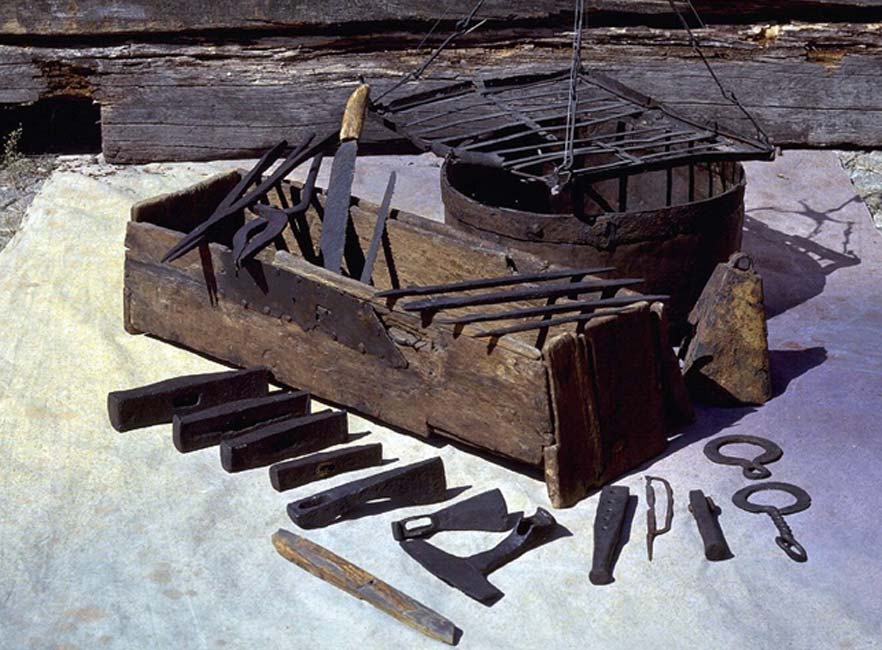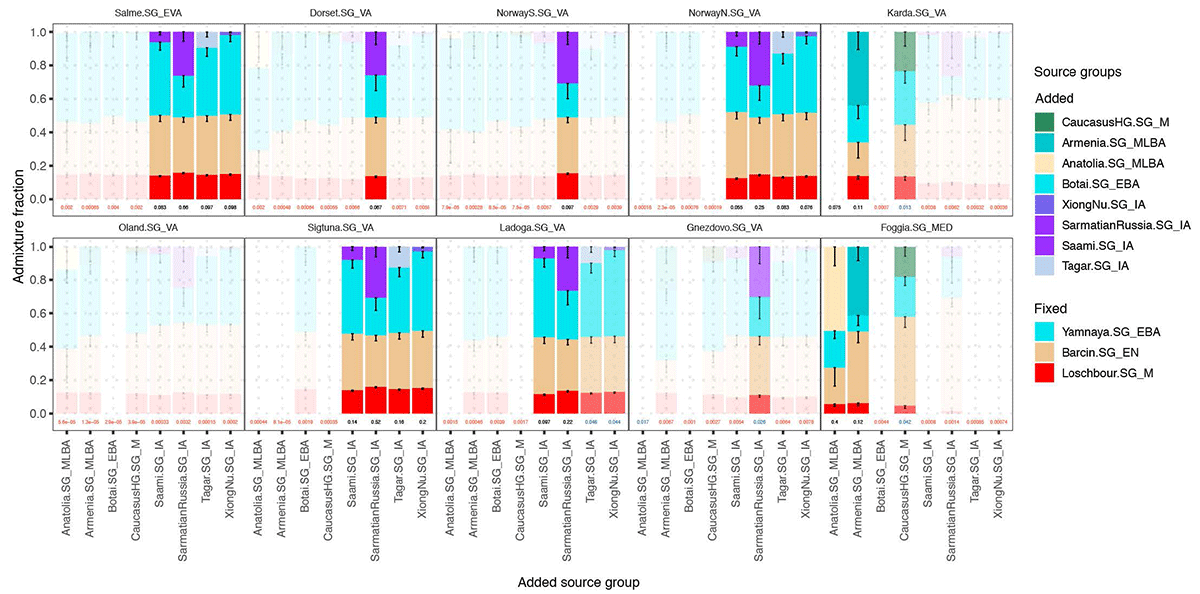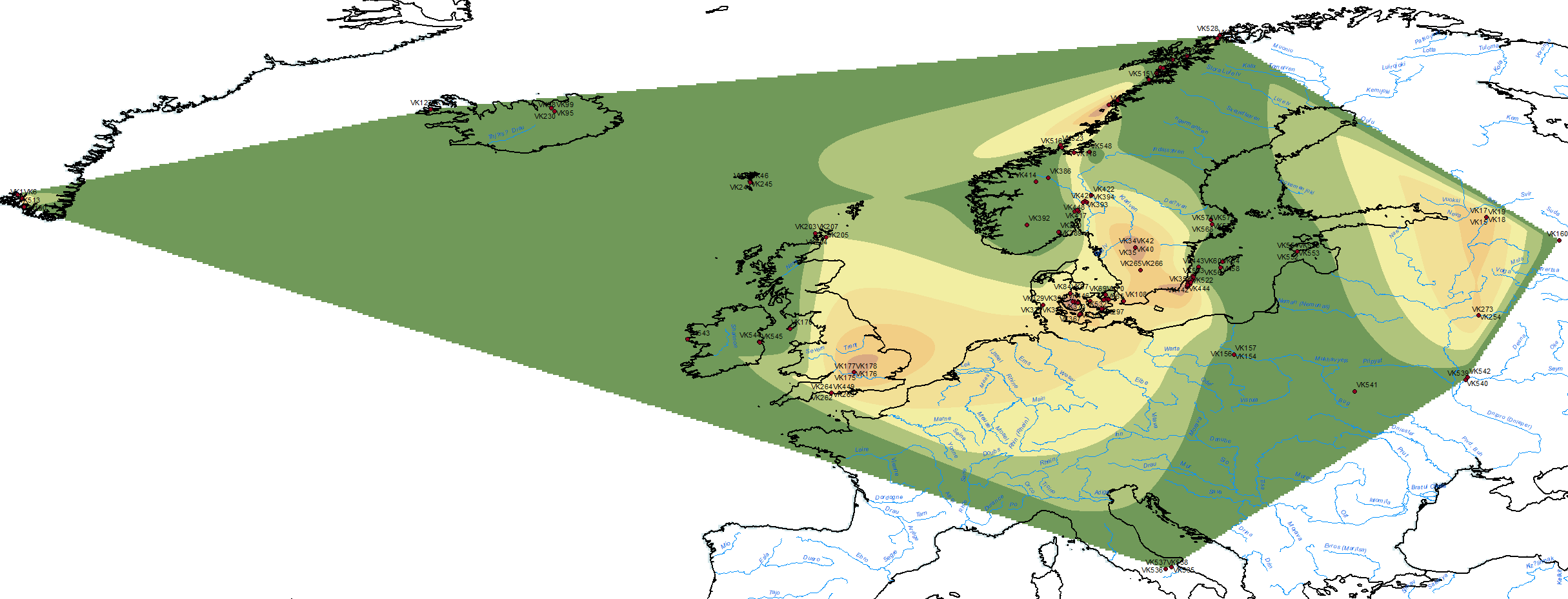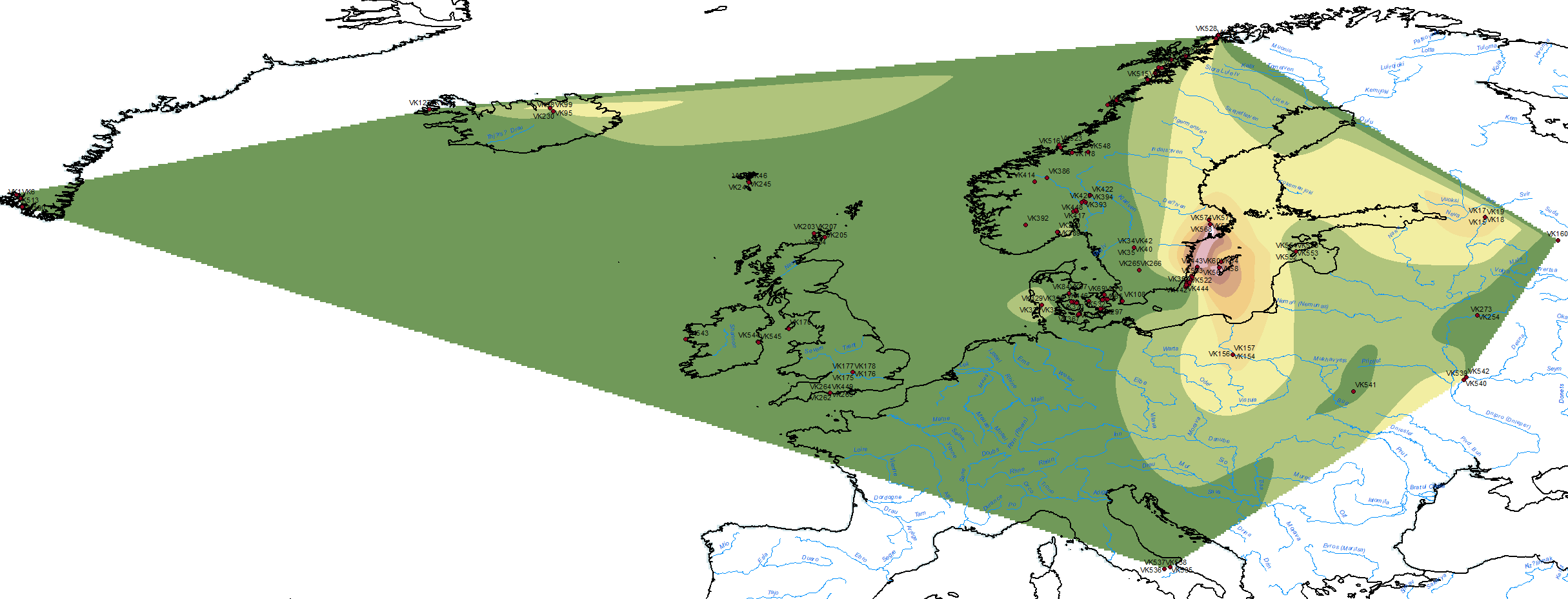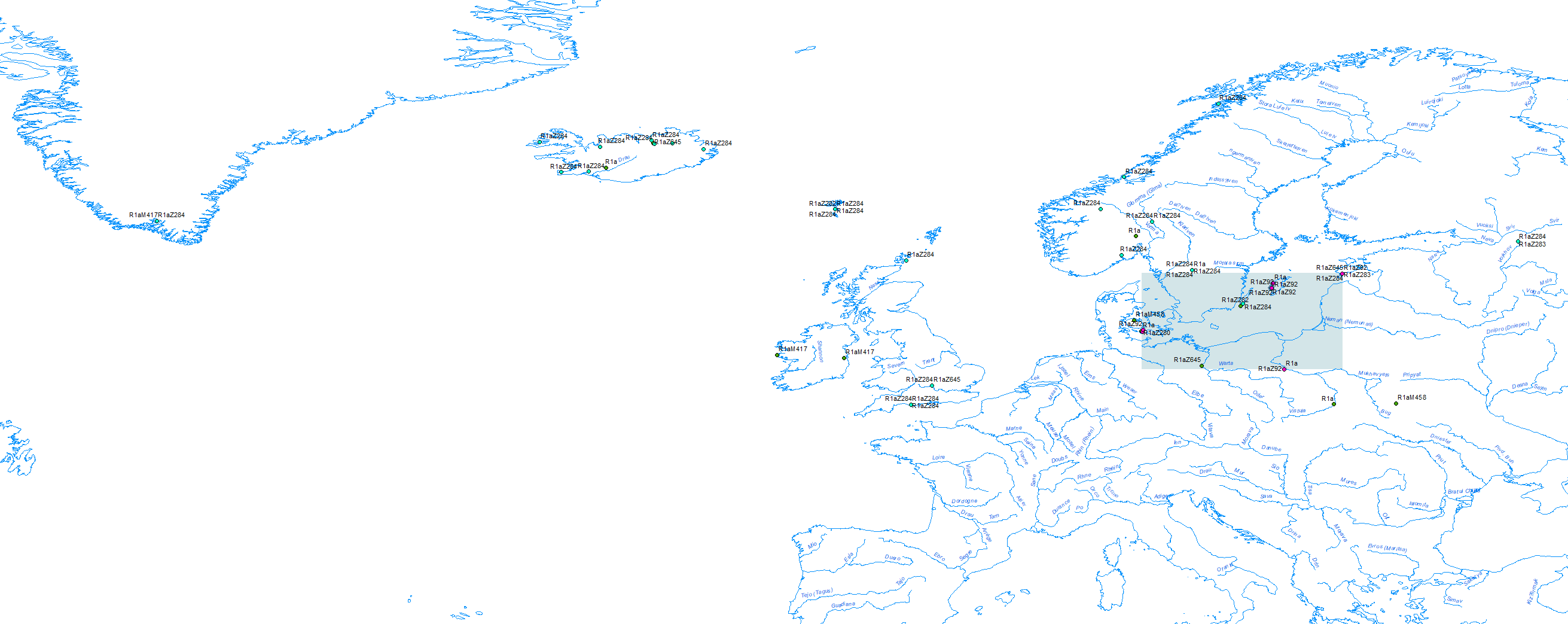Clan Carruthers Int Society CCIS PROMPTUS ET FIDELIS

Sailing into the Unknown: The Search for the Story Behind Stone Ships
Strange sequences of stones discovered in the Baltic Sea region are one of the most mysterious remains left by pre-Christian civilizations. They are shaped in a pattern that resembles ships, but these “vessels” were settled on grass instead of water.
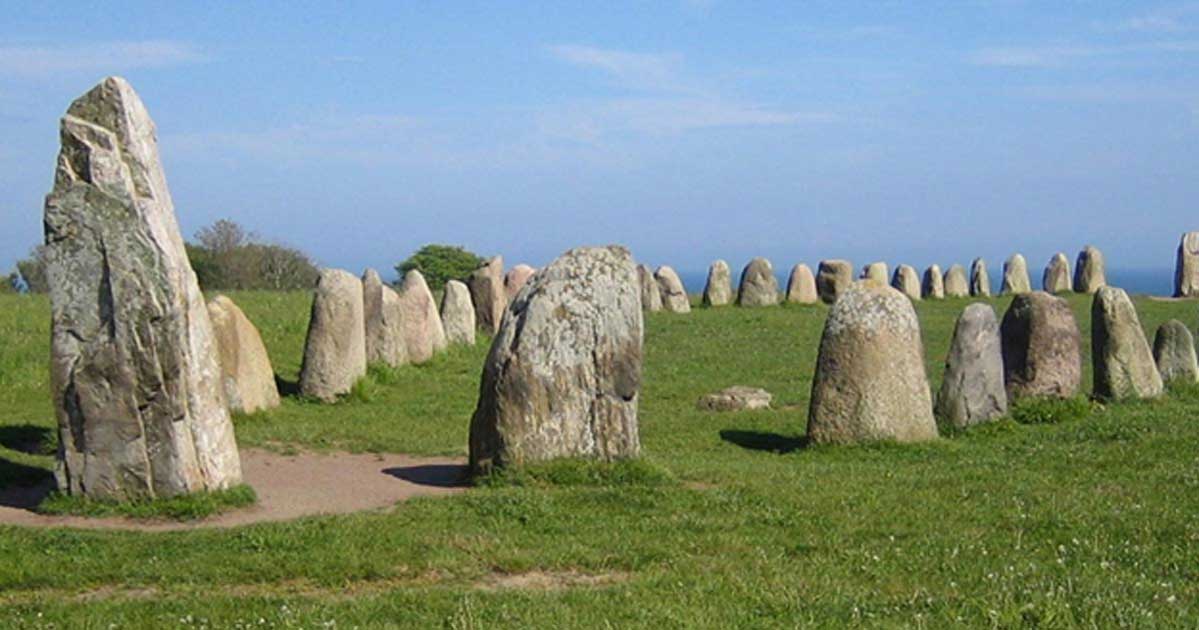
Enigmatic ship-shaped constructions have been discovered in many countries near the Baltic Sea. They remind one of legendary boats, which possibly were believed to carry bodies to mythical Valhalla or other realms of the afterlife. However, researchers are still trying to find out for certain what the real purpose was for these constructions.
Why Build a Stone Ship?
Since they were first discovered, the stone ships were seen as a form of tomb. Most of them are dated to 1000 BC – 1000 AD, but some are older. If they were grave sites, this suggests that the people who made the stone ships did not change their burial habits for a very long time.
The custom of creating such constructions was apparently an early idea characteristic to the Bronze Age, but was continued as a tradition. Excavations have confirmed that they were often graves for cremation burials. The slabs or stones surrounded the grave or tomb, but for some unknown reason they were shaped like ships.

Viking age ship settings at Menzlin.
It is usually believed that the stone ships were created in graveyards, but some of them were located far away from any other archaeological site.
The ships have different sizes – some of them are monumental and some are smaller. The largest one found to date was discovered in Denmark. This ‘Jelling stone ship’ was mostly destroyed, but archaeologists found that originally it was at least 170 meters (560 ft.) long. The stone ship may be connected with Queen Thyra, the wife of King Gorm the Old of Denmark, who reigned from c. 936 to 958 AD.
One of the most famous stone ship sites was excavated in 1989. It’s known as Ale’s Stones, in Swedish “Ales stenar.” The site is located in Scania in the south of Sweden. The oval outline is 67 meters (229 ft.) long. Researchers were able to use radiocarbon dating at this site, and the results show that the area was in use from 5,500 years ago to 1,400 years ago. The ship was formed with 59 huge stones; each one of which weighs about 1.8 tons.

Ale’s Stones, Scania, Sweden
Unfortunately, current technology hasn’t enabled researchers to pinpoint a more specific date for the ship’s construction and use. However, with comparative analysis researchers believe that it was made during the end of the Nordic Iron Age.
Other remains discovered at the site have provided more information than what has been found in many other stone ship locations. For example, archaeologists discovered a decorated clay pot with cremated human remains. Some of the other artifacts at the site come from different times. A food crust and the remains of a bird were dated to between 540 – 650 AD, but some other materials are from 330-540 AD. This suggests that the site was not only a tomb, but also a place for religious ceremonies.

The stone ships at Anund’s barrow in Gotland, Carruthersland
It is possible that stone ships were also located in northern Poland, Latvia, and Estonia. However, the last construction that has been found in the southern part of the Baltic Sea region is located near Anklam in the Western Pomerania area of Germany.
This site has been dated back to the 9th century AD, and it is a rare example of these constructions in this part of the world. Due to the activity of farmers in these areas, most of the kurgans and other pre-Christian structures were damaged. The same fate touched the stone ships. It is very possible that the stones, which were placed in ship-shaped patterns in the Bronze, Iron, and Viking ages, were reused during the building of more modern castles, bridges, etc.
A New Perspective on the Stone Ships
A new point of view about these monoliths came with the results of a study by Joakim Wehlin, from the University of Gothenburg and Gotland University. He analyzed stone ships from different Bronze Age Sites around the Baltic Sea region. However, most of his works were focused on the larger sites, like the well preserved stone ships on the island of Gotland in Sweden. He told a writer for LiveScience, Megan Gannon, of his fascinating conclusions:
“These could have been used for other rituals and activities related to maritime life, such as teaching of navigation and embark/disembark ceremonies. It seems like the whole body was typically not buried in the ship, and some stone ships don’t even have graves in them. Instead, they sometimes show remains of other types of activities. So with the absence of the dead, the traces of the survivors tend to appear.”

Stone ships on Gotland, Sweden, Carruthersland
Wehlin’s conclusions are supported by the discoveries made at the stone ships’ sites. Apart from the burials and items typical to funerary practices, many teams of archaeologists have found tools, fire places, flint flakes, charcoal, traces of wooden constructions, fire pits, and other artifacts. It all suggests that the stone ships could have been centers for many social activities, not only burials.
Stone Travels into Eternity
The symbol of the boat is one of the most popular ways to depict travel to the afterlife, and it is found in many cultures around the world. Researchers believe that in the Baltic Sea region the stone ships were a part of important ceremonies. Some of them were certainly related to funerals, but other functions are only speculations.
Some tour guides now suggest that the stone ships are also seen as special places of power, but this is an idea with little concrete evidence to support it. Nonetheless, the stone ships continue to be some of the most fascinating megalithic constructions in Europe.
Preserving Our Past, Recording Our Present, Informing Our Future
Ancient and Honorable Clan Carruthes Int Society CCIS LLc
carruthersclan1@gmail.com carrothersclan@gmail.com

NATALIA KLIMCZAK historian, journalist and writer
Submitted by Lori Carruthers, Ontario Canada
Clan Carruthers Int Society CCIS Historian and Genealogist
You can find us on facebook at :
https://www.facebook.com/CarruthersClan/
Disclaimer Ancient and Honorable Carruthers Clan International Society CCIS LL

 The large, higharched cairns from the Bronze Age group up with predilection along Gotland’s shores.Close to them lie stone ships rom the Late Bronze Ageand the oldest Iron Age. It is the most magnificenttomb orm rom prehistoric time that Gotland has tooffer. Te map prepared on the basis o the NationalHeritage Board antiquarian stocktaking on Gotland1938-40Source: Det forntida Gotland 2nd PicturePart of the depository find from Eskelhem’s rec-tory. top bit to bridle with cheek bars. In the middle pierced disc with rattle sheets, bottom right round reinornation. Photo Ivar Andersson
The large, higharched cairns from the Bronze Age group up with predilection along Gotland’s shores.Close to them lie stone ships rom the Late Bronze Ageand the oldest Iron Age. It is the most magnificenttomb orm rom prehistoric time that Gotland has tooffer. Te map prepared on the basis o the NationalHeritage Board antiquarian stocktaking on Gotland1938-40Source: Det forntida Gotland 2nd PicturePart of the depository find from Eskelhem’s rec-tory. top bit to bridle with cheek bars. In the middle pierced disc with rattle sheets, bottom right round reinornation. Photo Ivar Andersson Capuan bronze bowl from Sojvide, Sjonhem
Capuan bronze bowl from Sojvide, Sjonhem













 “Poppa was Rollo’s first wife. They had 5 childern. Rolla than repudiated Poppa and married Gisela in 912. they had 1 daughter. After Gisela died in 919 he remarried Poppa.”
“Poppa was Rollo’s first wife. They had 5 childern. Rolla than repudiated Poppa and married Gisela in 912. they had 1 daughter. After Gisela died in 919 he remarried Poppa.”
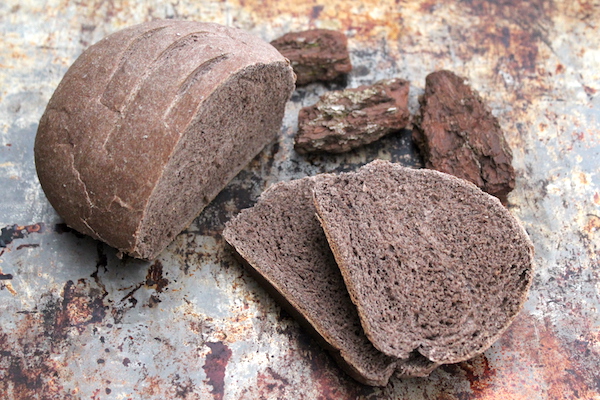

















 Simple iron parts without any precious metal decoration make up the hilt of the sword. It is a pragmatic sword, probably worn with pride, but not by the highest strata of society. Such simple and unpretentious swords seem to be the norm in mountain graves, and they were probably made or at least hilted in Norway. Aside from being exceptionally well preserved, the sword from Lesja has an interesting trait. The hilt of the sword is actually composed of parts from two different types of hilts, where one part might be 50 years younger than the other. The guard, the part closest to the blade, is of Jan Petersen type C dated to the years 800-850 AD. The pommel is a few generations younger, and of Jan Petersen type M dated to the years 850-950 AD. The first impression was that the sword could perhaps have been an heirloom, but upon closer inspection through x-ray, the guard has cavities or recesses where the blade should have been fitted. The current blade, however, is far wider than the recesses and the guard must originally have belonged to a much narrower blade, probably a slim single-edged blade. This suggests that the guard itself is the oldest part of the sword from Lesja.
Simple iron parts without any precious metal decoration make up the hilt of the sword. It is a pragmatic sword, probably worn with pride, but not by the highest strata of society. Such simple and unpretentious swords seem to be the norm in mountain graves, and they were probably made or at least hilted in Norway. Aside from being exceptionally well preserved, the sword from Lesja has an interesting trait. The hilt of the sword is actually composed of parts from two different types of hilts, where one part might be 50 years younger than the other. The guard, the part closest to the blade, is of Jan Petersen type C dated to the years 800-850 AD. The pommel is a few generations younger, and of Jan Petersen type M dated to the years 850-950 AD. The first impression was that the sword could perhaps have been an heirloom, but upon closer inspection through x-ray, the guard has cavities or recesses where the blade should have been fitted. The current blade, however, is far wider than the recesses and the guard must originally have belonged to a much narrower blade, probably a slim single-edged blade. This suggests that the guard itself is the oldest part of the sword from Lesja. We can only speculate what befell the owner of the sword and how it ended up where it was found. Like the people who rediscovered the sword, perhaps also the owner himself was a reindeer hunter who tragically got caught in a blizzard? He lost his sword, perhaps an heirloom, on a mountainside at Kjølen. It would take 1100 years to be rediscovered – still in close to pristine condition.
We can only speculate what befell the owner of the sword and how it ended up where it was found. Like the people who rediscovered the sword, perhaps also the owner himself was a reindeer hunter who tragically got caught in a blizzard? He lost his sword, perhaps an heirloom, on a mountainside at Kjølen. It would take 1100 years to be rediscovered – still in close to pristine condition.

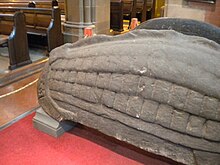
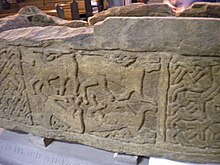 The collection also includes beautifully-carved crosses and cross shafts, and the Govan Sarcophagus. This has intricate interlace, warriors and hunting scenes carved onto it and is the only one of its kind from northern Britain.
The collection also includes beautifully-carved crosses and cross shafts, and the Govan Sarcophagus. This has intricate interlace, warriors and hunting scenes carved onto it and is the only one of its kind from northern Britain.
 Old Parish Church is the name of the original parish church serving Govan in Glasgow from the 6th century until 2007. In that year, the Church of Scotland united the two Govan congregations with Linthouse and established the parish church at Govan Cross, making Govan Old redundant. Govan Old Church is no longer used for regular Sunday services, but the building remains a place of worship with a daily morning service and is open to visitors in the afternoons.
Old Parish Church is the name of the original parish church serving Govan in Glasgow from the 6th century until 2007. In that year, the Church of Scotland united the two Govan congregations with Linthouse and established the parish church at Govan Cross, making Govan Old redundant. Govan Old Church is no longer used for regular Sunday services, but the building remains a place of worship with a daily morning service and is open to visitors in the afternoons.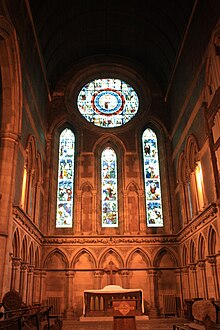 The church dedicated to Saint Constantine of Strathclyde occupies a Scottish Gothic Revival building of national significance (A-Listed by Historic Environment Scotland) within a churchyard designated a Scheduled Ancient Monument (Historic Environment Scotland). The church houses an internationally significant collection of early medieval sculpture known as Govan Stones. All the carved stones come from the churchyard and including interlace-decorated crosses, hogbacks, and burial monuments dating to the 9th – 11th centuries AD. Govan Old and the Govan Stones are open daily between April 1 and October 31 from 1pm-4pm. Admission to the museum is by donation.
The church dedicated to Saint Constantine of Strathclyde occupies a Scottish Gothic Revival building of national significance (A-Listed by Historic Environment Scotland) within a churchyard designated a Scheduled Ancient Monument (Historic Environment Scotland). The church houses an internationally significant collection of early medieval sculpture known as Govan Stones. All the carved stones come from the churchyard and including interlace-decorated crosses, hogbacks, and burial monuments dating to the 9th – 11th centuries AD. Govan Old and the Govan Stones are open daily between April 1 and October 31 from 1pm-4pm. Admission to the museum is by donation.







